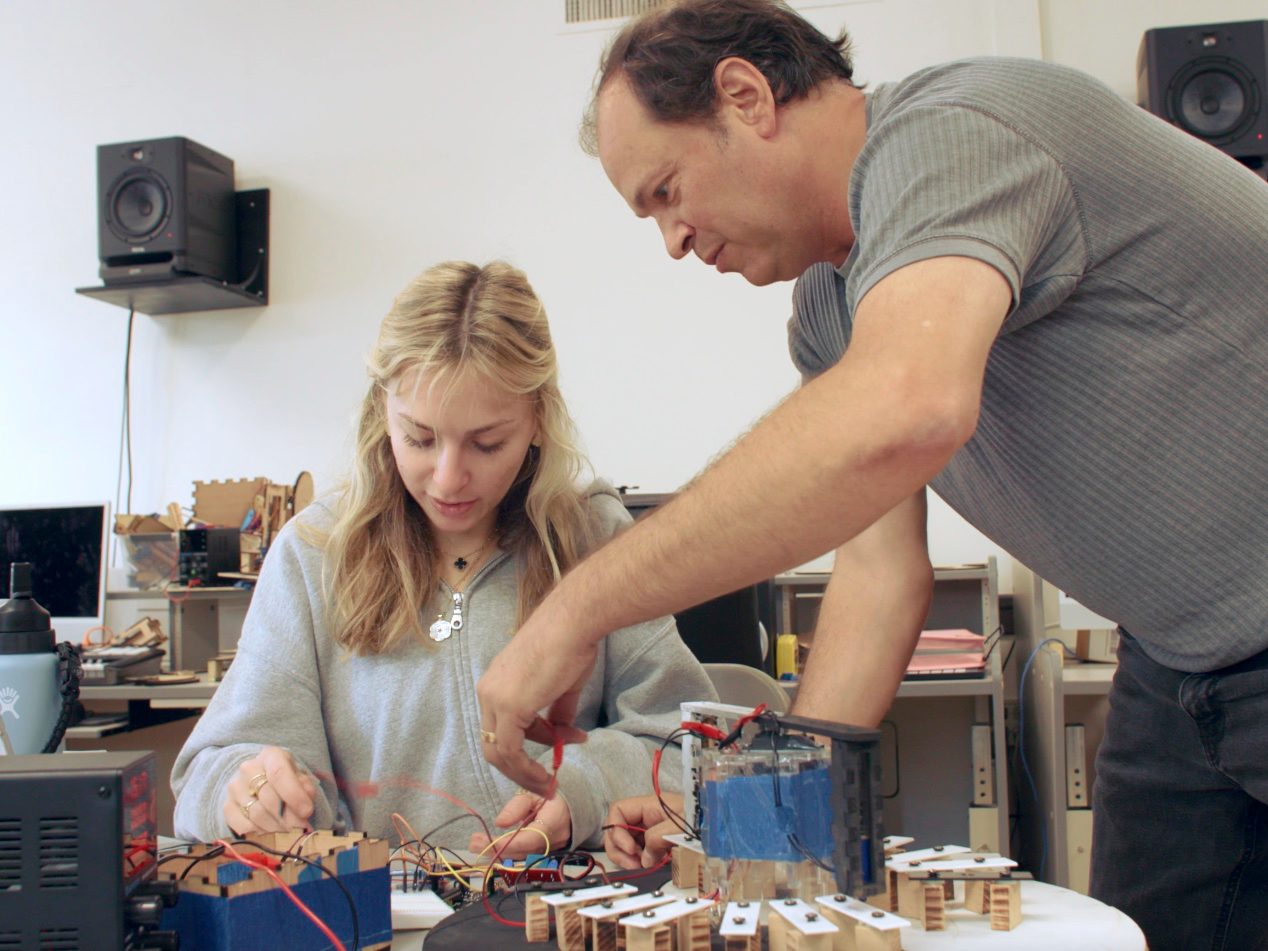The musical robots of Dixon Hall
Tucked away in a classroom in Dixon Hall, a chorus of whirring motors and ringing xylophones accompanies the chatter of students as they work through the trial-and-error process inherent to robotics.
This is Algorithmic and Computer Music, a course led by Rick Snow, senior professor of practice of Music Science and Technology in the School of Liberal Arts. In this class, groups of students combine musical and engineering concepts to create musical robots.
“With every change in technology throughout human history, it has somehow been applied to music,” said Snow. He views the musical robots his students create as a natural next step in a tradition of wind-up music boxes and musical automata.
Snow has previously worked with engineering students to create musical robots for their capstone projects, but this is the first class on the subject available to non-engineering students.
“I can tailor the class to the interests of the students who want to take it,” said Snow.
Many students in this semester’s class are part of the music science and technology minor program, also led by Snow, and many have an art and music background. That led to a stronger focus on teaching engineering concepts and training on fabrication tools, but that did not prevent the students from diving headfirst into their projects.
The students started with smaller projects using specific elements, like motors and basic circuits, then began combining them into more complex devices. “We’ve covered a lot of different material in the course,” Snow said. “Everything from fabrication techniques, which required extensive use of the [Scot Ackerman] MakerSpace, to understanding the circuits that control the robots, to understanding the programming language that then controls the circuits.”
Each group added their own elements to make their robots unique. Grace McIntyre-Willis, an MFA studio art graduate student, has been working with 3D-printed ceramics throughout her MFA program and chose to incorporate them into the robot she made with her partner Izzy Blair, a computer science and music undergraduate student. “I’ve been working with generative sound using weather instruments,” said McIntyre-Willis, “so taking this course has felt very integrated with my current artistic practice.”
Another pair modeled their robot after yin and yang and the concept of sacred geometries, with the tines of a xylophone carefully chosen and placed around a yin and yang circle. “We drew up some plans based on the mathematics and the ratios behind it, and we used that to calculate the radius and figure out where to place the tines in relation to the center point,” said Ellie Roche, a philosophy major with a coordinate major in digital media practices. “It kind of designed itself, which was cool.”
The robots got their time to shine during a concert for music technology students. The students composed music for their robots to play and filmed the result. Snow edited the videos together, giving each robot a spotlight, then had them play together, a robotic orchestra filling Dixon Hall. “It’s cool to see everyone’s stuff working, and working together,” said Jed Cohen, who is in the music science and technology minor program.
The robots rarely, if ever, worked properly on the first attempt, but that is part of the point for Snow. “We all need that practice of being frustrated by something and knowing that the answer is out there. Then going and finding the answer and applying it, and maybe not getting it right the first time, or even the second time, or maybe even the third time,” he said, “but you learn from the experience of continually applying yourself to that project.”
The experience of finally getting it right after that frustration can be “very rewarding,” said Roche. “The most exciting part of the process is when the thing you’ve been working on for a really long time finally works.”

